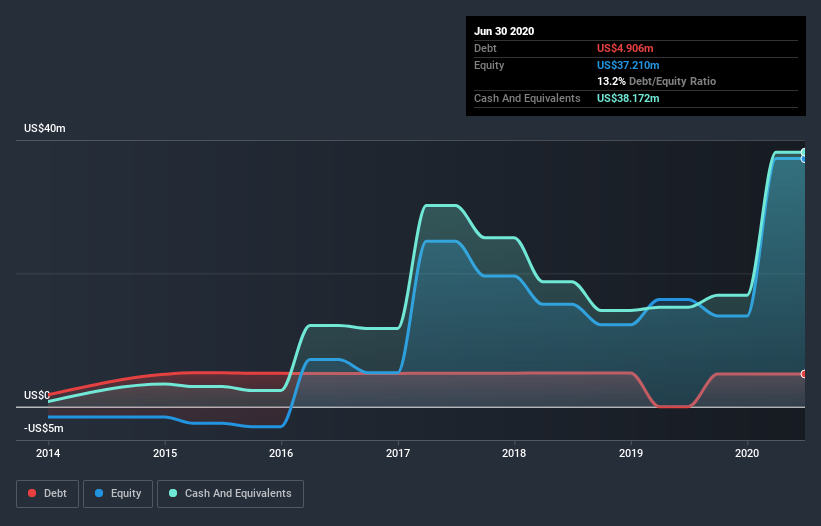MaxCyte (LON:MXCT) Has Debt But No Earnings; Should You Worry?

The external fund manager backed by Berkshire Hathaway's Charlie Munger, Li Lu, makes no bones about it when he says 'The biggest investment risk is not the volatility of prices, but whether you will suffer a permanent loss of capital.' So it might be obvious that you need to consider debt, when you think about how risky any given stock is, because too much debt can sink a company. As with many other companies MaxCyte, Inc. (LON:MXCT) makes use of debt. But the real question is whether this debt is making the company risky.
When Is Debt Dangerous?
Debt is a tool to help businesses grow, but if a business is incapable of paying off its lenders, then it exists at their mercy. Part and parcel of capitalism is the process of 'creative destruction' where failed businesses are mercilessly liquidated by their bankers. While that is not too common, we often do see indebted companies permanently diluting shareholders because lenders force them to raise capital at a distressed price. Of course, debt can be an important tool in businesses, particularly capital heavy businesses. The first thing to do when considering how much debt a business uses is to look at its cash and debt together.
View our latest analysis for MaxCyte
What Is MaxCyte's Net Debt?
As you can see below, at the end of June 2020, MaxCyte had US$4.91m of debt, up from none a year ago. Click the image for more detail. But it also has US$38.2m in cash to offset that, meaning it has US$33.3m net cash.
A Look At MaxCyte's Liabilities
Zooming in on the latest balance sheet data, we can see that MaxCyte had liabilities of US$9.17m due within 12 months and liabilities of US$7.00m due beyond that. Offsetting these obligations, it had cash of US$38.2m as well as receivables valued at US$3.75m due within 12 months. So it can boast US$25.8m more liquid assets than total liabilities.
This surplus suggests that MaxCyte has a conservative balance sheet, and could probably eliminate its debt without much difficulty. Succinctly put, MaxCyte boasts net cash, so it's fair to say it does not have a heavy debt load! The balance sheet is clearly the area to focus on when you are analysing debt. But it is future earnings, more than anything, that will determine MaxCyte's ability to maintain a healthy balance sheet going forward. So if you're focused on the future you can check out this free report showing analyst profit forecasts.
Over 12 months, MaxCyte reported revenue of US$24m, which is a gain of 33%, although it did not report any earnings before interest and tax. With any luck the company will be able to grow its way to profitability.
So How Risky Is MaxCyte?
Statistically speaking companies that lose money are riskier than those that make money. And in the last year MaxCyte had an earnings before interest and tax (EBIT) loss, truth be told. And over the same period it saw negative free cash outflow of US$10m and booked a US$9.5m accounting loss. However, it has net cash of US$33.3m, so it has a bit of time before it will need more capital. With very solid revenue growth in the last year, MaxCyte may be on a path to profitability. By investing before those profits, shareholders take on more risk in the hope of bigger rewards. When analysing debt levels, the balance sheet is the obvious place to start. However, not all investment risk resides within the balance sheet - far from it. To that end, you should be aware of the 3 warning signs we've spotted with MaxCyte .
When all is said and done, sometimes its easier to focus on companies that don't even need debt. Readers can access a list of growth stocks with zero net debt 100% free, right now.
This article by Simply Wall St is general in nature. It does not constitute a recommendation to buy or sell any stock, and does not take account of your objectives, or your financial situation. We aim to bring you long-term focused analysis driven by fundamental data. Note that our analysis may not factor in the latest price-sensitive company announcements or qualitative material. Simply Wall St has no position in any stocks mentioned.
Have feedback on this article? Concerned about the content? Get in touch with us directly. Alternatively, email editorial-team@simplywallst.com.

 Yahoo Finance
Yahoo Finance 
